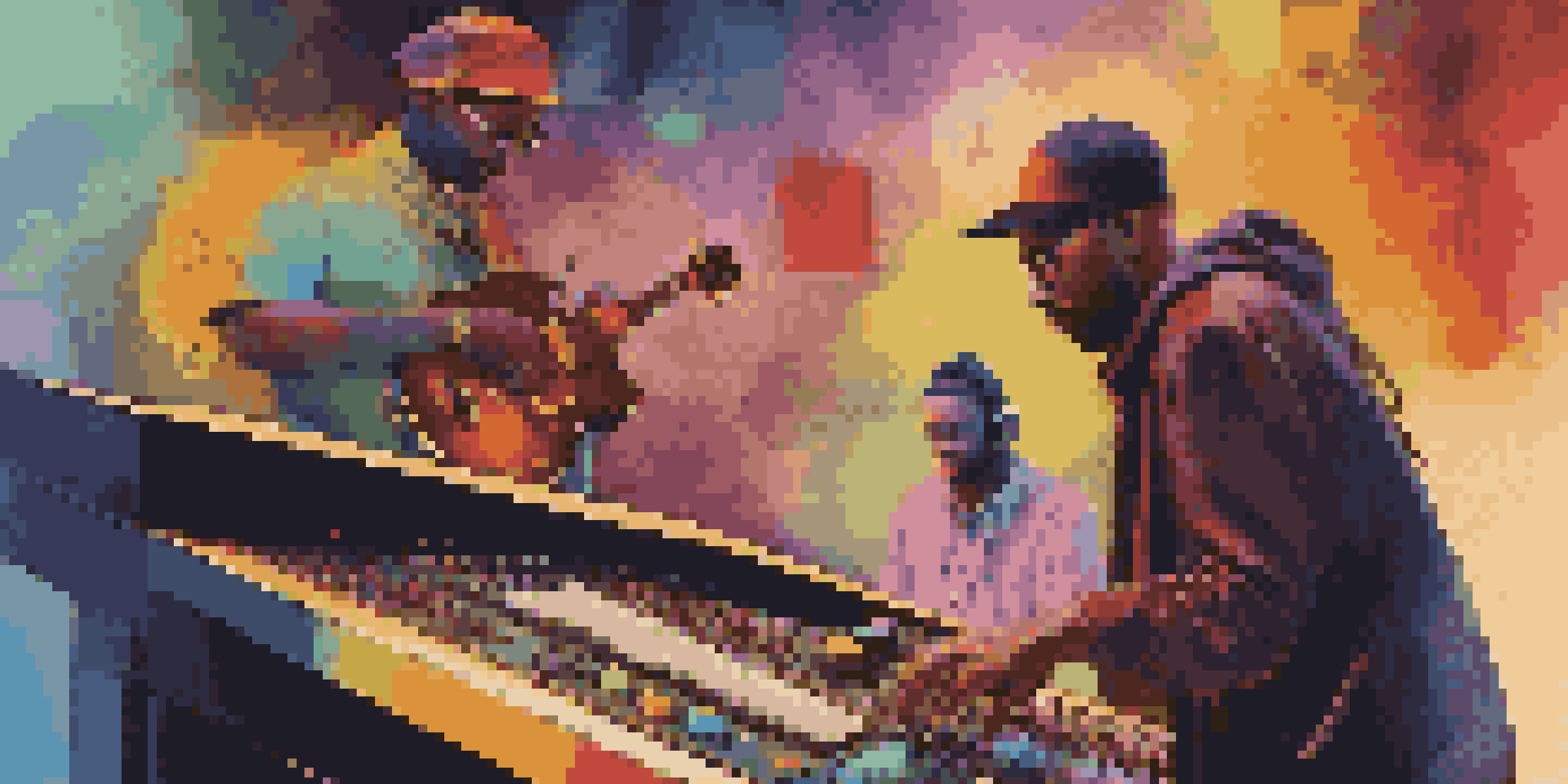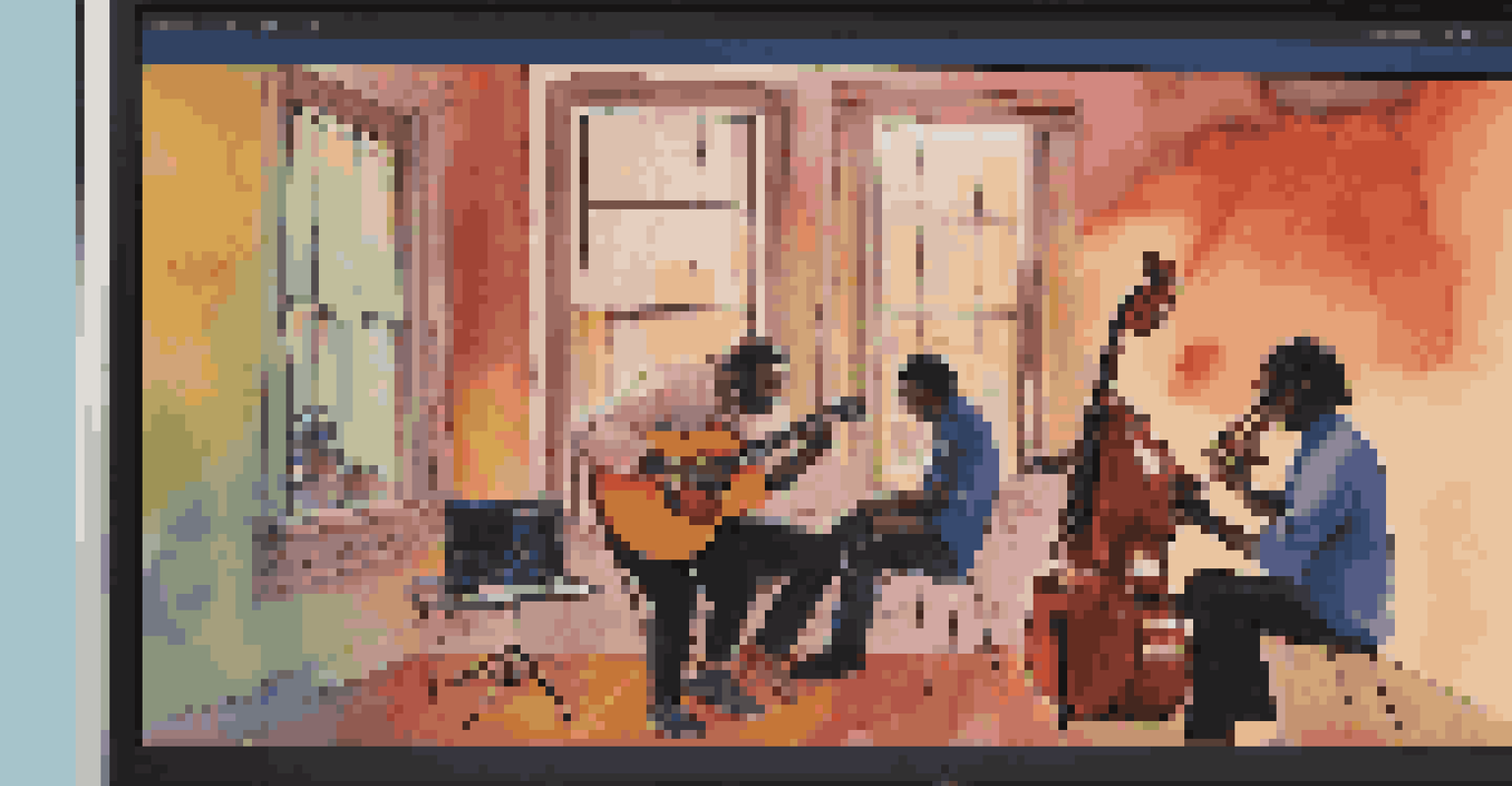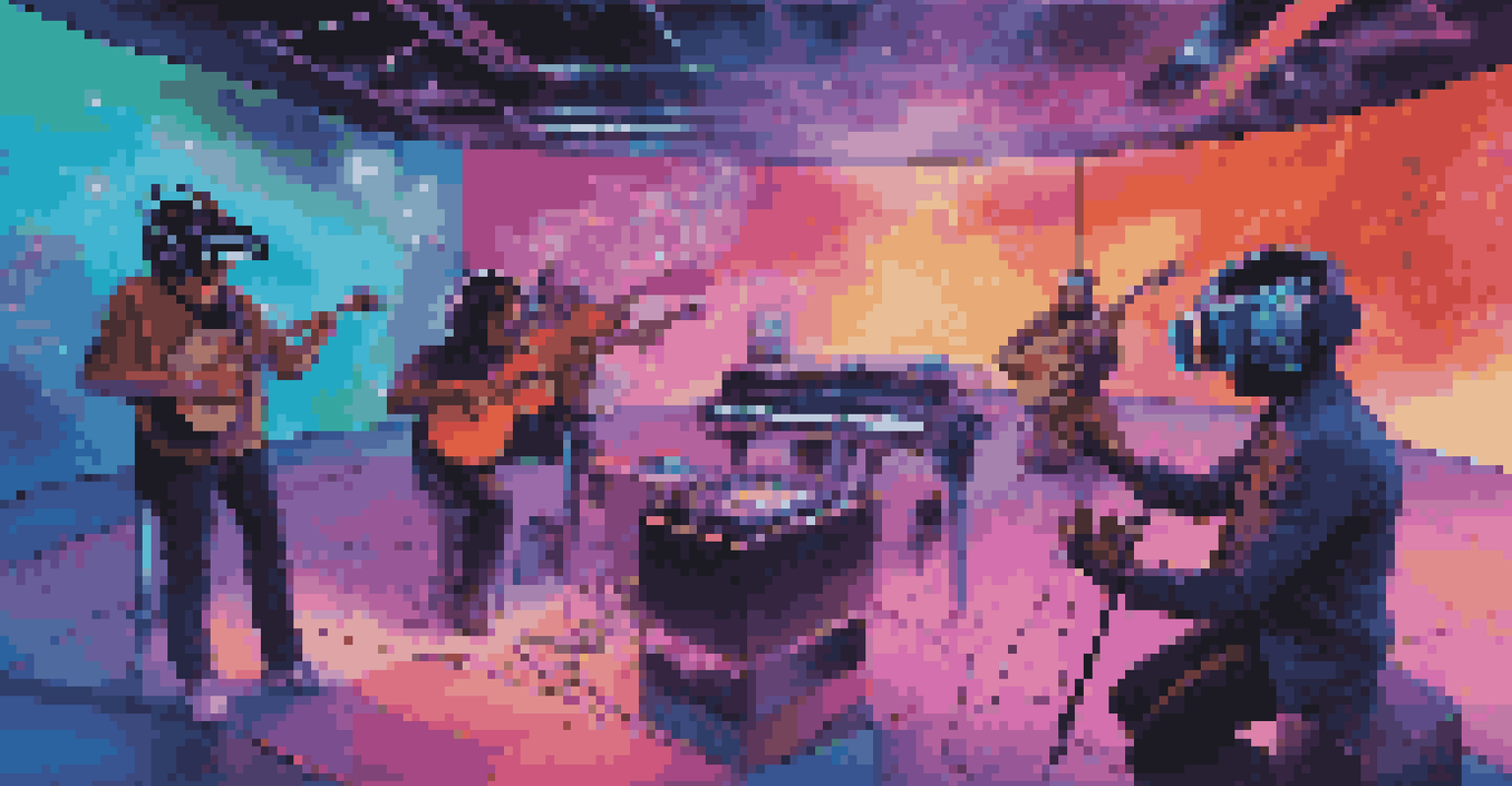Using Technology to Foster Music Collaboration Among Peers

The Evolution of Music Collaboration in the Digital Age
Music collaboration has transformed dramatically with the advent of technology. In the past, musicians often had to be in the same room to create together, which limited opportunities for many. Today, tools like cloud storage and collaboration software enable artists from different corners of the world to join forces seamlessly.
Music brings people together, even when they are worlds apart.
This evolution not only allows for geographical flexibility but also opens up a treasure trove of diverse influences. Imagine a jazz guitarist from New Orleans riffing with a hip-hop producer in Berlin. Technology fosters these connections, allowing for creative experimentation that enriches the music.
Moreover, the rise of digital platforms means that anyone with an internet connection can collaborate and share their work. This democratization of music creation empowers aspiring musicians to find their voice and contribute to the global music scene.
Popular Tools for Collaborative Music Creation
Various tools have emerged to facilitate music collaboration, each offering unique features. For instance, platforms like Soundtrap and BandLab allow users to record, edit, and collaborate in real-time, making it feel like a virtual jam session. These tools simplify the process of sharing ideas and feedback, which is crucial for creative growth.

Additionally, software like Ableton Live and GarageBand come equipped with features that support collaborative projects, enabling musicians to work on tracks together, regardless of their physical location. These programs often include cloud capabilities, allowing seamless access to the latest versions of projects.
Collaboration Breaks Geographic Barriers
Technology enables musicians from different parts of the world to collaborate seamlessly, enriching the creative process.
It's important to choose the right tools based on the needs of the collaboration. Some musicians might prefer simple apps for quick sessions, while others might lean towards more sophisticated software for detailed production work.
The Role of Social Media in Music Collaboration
Social media platforms have become powerful hubs for musicians to connect and collaborate. By sharing snippets of their work on platforms like Instagram or TikTok, artists can attract like-minded peers who resonate with their style. This not only fosters collaboration but also builds a supportive community around their music.
Technology is not just a tool; it can give you a voice and a way to share it with others.
Furthermore, social media allows musicians to showcase their collaborative efforts, amplifying their reach. When artists tag each other in posts or share collaborative projects, it introduces them to new audiences, creating a win-win scenario for all involved.
In this digital age, the relationship between social media and music collaboration is symbiotic. Musicians can leverage their online presence to find collaborators, while social media thrives on the rich content generated by these partnerships.
Overcoming Challenges with Technology in Collaboration
While technology has made music collaboration more accessible, it isn't without its challenges. For instance, technical issues such as lag or software glitches can disrupt the creative flow, leaving musicians frustrated. Being well-versed in the tools being used can help mitigate these problems.
Additionally, differences in time zones can complicate real-time collaboration, as musicians may struggle to find overlapping hours to connect. However, asynchronous collaboration tools can help artists share ideas and feedback at their convenience, allowing creativity to flourish, even when collaborators are offline.
Social Media Fuels Musical Connections
Platforms like Instagram and TikTok help artists showcase their work and find collaborators, building supportive music communities.
Ultimately, embracing these challenges as part of the collaborative process can lead to innovative solutions. By maintaining a flexible mindset and open communication, artists can navigate the hurdles and create amazing music together.
The Impact of Online Communities on Music Collaboration
Online communities have emerged as vital spaces for musicians to seek collaboration and support. Websites like Reddit, Facebook groups, and dedicated music forums provide platforms where artists can share their work, request collaborations, and offer feedback. These communities foster a sense of belonging that is essential for creative growth.
Engaging with these communities allows musicians to find collaborators who share similar goals and values. For example, a singer-songwriter may connect with a producer who specializes in a specific genre, leading to authentic and meaningful collaborations.
Moreover, these online spaces often host events such as virtual jam sessions or songwriting challenges, encouraging participation and collaboration. By tapping into these networks, musicians can significantly expand their creative horizons.
Using Video Conferencing for Real-Time Collaboration
Video conferencing tools like Zoom and Microsoft Teams have become crucial for real-time music collaboration. These platforms not only allow musicians to communicate face-to-face but also enable them to share screens, making it easier to work on projects together. This real-time interaction can lead to spontaneous bursts of creativity.
During video calls, musicians can experiment with ideas on the spot, whether it's trying out a new chord progression or arranging a piece. This immediacy enhances the collaborative experience, as artists can quickly adapt and refine their work based on feedback.
Emerging Tech Transforms Music Creation
Innovations like AI and virtual reality are set to revolutionize how musicians collaborate, pushing the boundaries of creativity.
However, ensuring a good internet connection and familiarizing oneself with the software is key to a smooth collaboration. With these tools in hand, musicians can bridge distances and create magic together, no matter where they are.
Looking Forward: The Future of Music Collaboration
As technology continues to evolve, the possibilities for music collaboration are limitless. Emerging technologies like artificial intelligence and virtual reality are starting to play a role in how musicians create together. For instance, AI can assist in generating melodies or harmonies, inspiring artists to push their creative boundaries.
Moreover, virtual reality could offer immersive environments for collaboration, allowing musicians to interact in a shared digital space, regardless of physical location. This could revolutionize the way artists experience and engage with each other’s work.

In this fast-paced digital landscape, staying open to new tools and techniques will be essential for musicians looking to collaborate. Embracing these changes can lead to exciting innovations in music-making, ensuring that creativity knows no bounds.